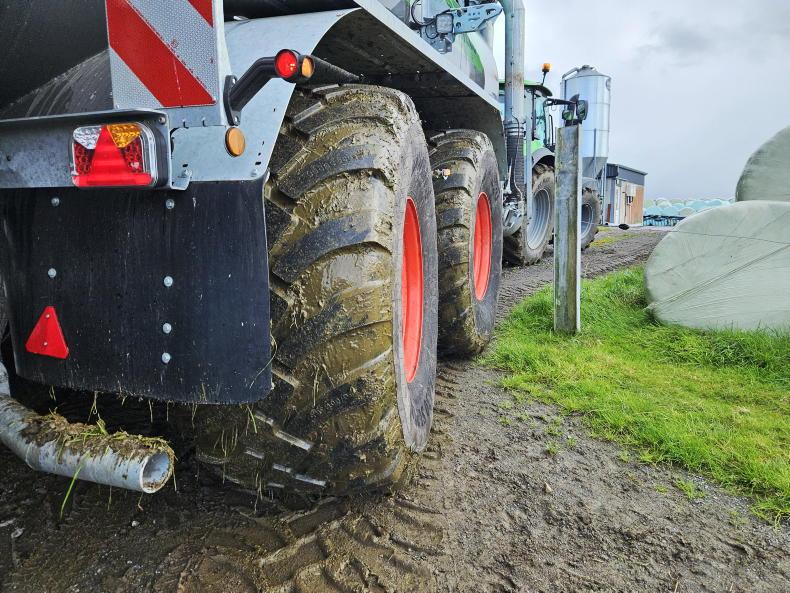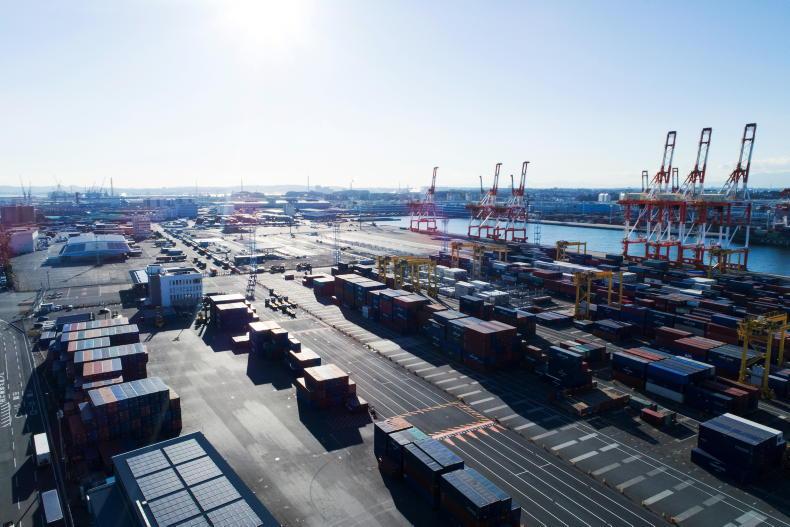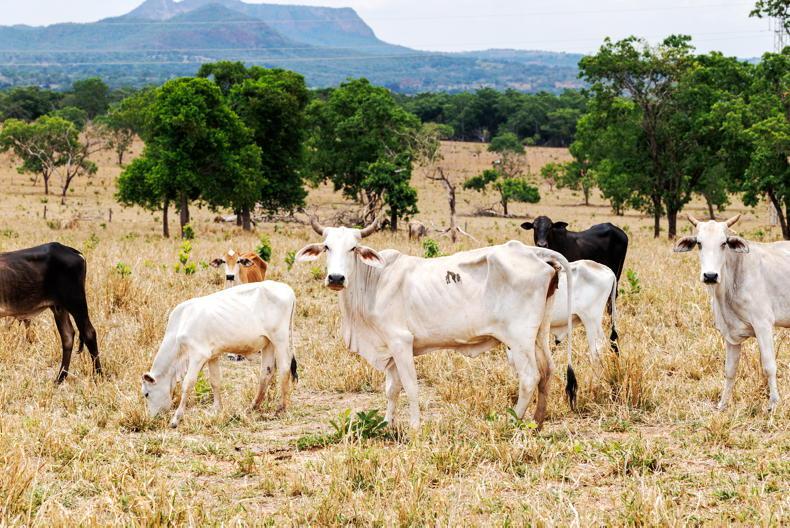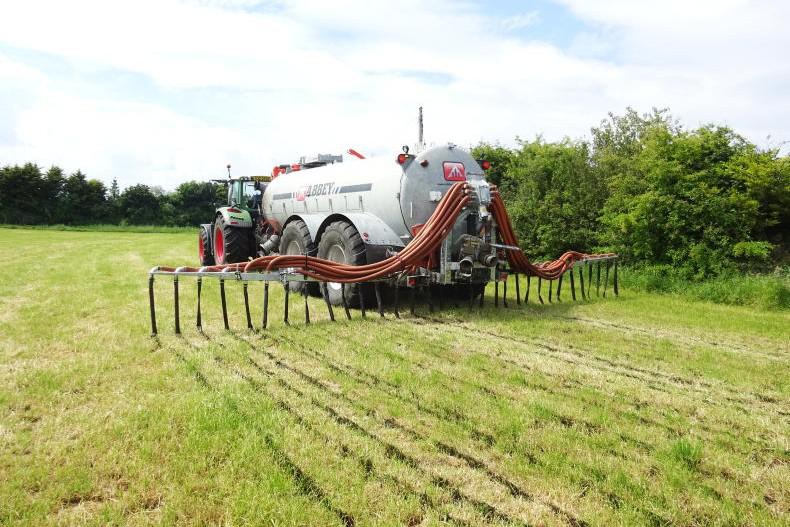Reesink has just setup a new agri division in Ireland. Its first product being introduced here is the Kaweco range of high-end slurry equipment from the Netherlands.
We travelled to a working demonstration on a 140-cow dairy farm outside Ballinasloe, where an Irish launch took place.
Who is Reesink?
Reesink Ireland is a subsidiary of Royal Reesink, which is a Dutch-owned global distribution company.
The company is involved in machinery, components and services in agriculture, landscape, turfcare and warehouse equipment. The firm was founded by Hendrik Reesink, as a one-man operation in the Netherlands, in 1786. Today, it employs over 2,500 people across 40 subsidiaries worldwide, with a turnover of €1bn.

The unit is fitted with its own built maxi cut inlet macerator and a stone catcher, protecting the rotary lobe pump against foreign objects.

The demo tanker featured a 6,000l rotary lube pump, which is positioned underneath the tanker.
The firm’s Irish base is located outside Nurney, Co Kildare. Reesink Ireland is headed up by general manager Tomás Cooney. In Ireland, Reesink took on the distribution of the Farmtrac range of compact and agricultural tractors almost two years ago. The company also handles turfcare and grounds machinery, and irrigation solutions.

We were very impressed with the firm’s 8m injection system, which weighed in at just 1,400kg.

The unit can be controlled through IsoBus, or separately through the Muller touch screen terminal, which can be used in conjunction with joystick controls.
Who is Kaweco?
Kaweco is a Dutch manufacturer based in Hengelo, eastern Holland. The firm was established in 1919 and manufactures slurry tankers, low-emission applicators, silage trailers and small-wheel loaders. Kaweco manufactured its first slurry tanker back in 1969, and has built itself a reputation for offering high-end slurry equipment.
The company has changed hands several times over the years, and even claimed to have built the first self-propelled forage harvester, which went on to become the Claas Jaguar. Reesink actually bought Kaweco in 1989, before later selling it on and then buying it back in 2018.
In 2022, the company turned over €31.5m, with Germany (55%), the Netherlands (28%), the UK (4%), Poland (3%) and France (2%) being its main markets. Last year, it manufactured 489 machines, with 187 being slurry tankers and 111 being low-emission slurry applicators.
Managing director Patrik Roelofs told the Irish Farmers Journal that the company doesn’t mass produce machines, but instead custom builds orders to huge specifications, especially with slurry tankers, which need to meet the significant legislation demand in the Netherlands. In saying this, it has just completed works at the factory which will give it the potential to double production capacity.

Kaweco uses dribble bars from Vogelsang, trailing shoes from Bomech and the disc injection systems are built in house.

At the Irish launch last week, the company demonstrated a twin-axle Kaweco Profi II, which is a 4,000-gallon contractor model.

The machine was equipped with a steering axle.
Slurry in the Netherlands
To understand why there is a requirement for some of the huge specification we see on slurry tankers on the continent, we need to get our heads around some of the legislation in some of these countries. If we take the home of Kaweco, the Netherlands, as an example, we see that the use of slurry has been tightly regulated for years. To start, the use of a splash plate as an application method was outlawed in the Netherlands in 1992. Meanwhile, for quite a few years, all slurry is currently required to be applied through an injection system.
The legislation says: “You may no longer use a fertiliser that spreads manure between the grass. We call this low-emission use, but it is better known as the trailing foot ban. As in previous years, you may place manure in trenches in the soil. From 2019, you will only do this with a slurry injector that is completely closed to the ground. The slots or dimples may not be wider than 5cm. And the manure must not come over the edge of the slots or dimples”.
The current window for spreading slurry in the country is from 16 February to 31 August. Even during this period, it is prohibited to apply slurry if the ground is partly/completely frozen, if there’s any snow and if the soil’s top layer is saturated with water. There are also strict buffer zones.

Clever innovation: steel tips on the end of the suction hoses

Clever innovation: pressure release valves on the side of the suction points.
Quite a bit of slurry is traded among farmers in the Netherlands. A lot of this is down to strict application limits, which vary depending on the location and the soil type. Transporting slurry is generally only allowed if the contractor is registered as an intermediary with the Netherlands Enterprise Agency (RVO). They are required to register their storage, equipment and vehicles, and are strictly required to keep records.
If you move slurry in the Netherlands, you are responsible for the whole process which includes the transport, loading, weighing, sampling and unloading. Vehicles used to transport slurry must be fitted with GPS tracking devices and Automatic Data Registration Equipment (AGR). Each load has to be weighed and sampled, with samples being promptly analysed by a laboratory.
Every time slurry is transported, the driver needs to fill out a real-time animal manure consignment note, with one copy sent to the Dutch department of agriculture, and another copy present on the machine. Quite a bit of the slurry in the Netherlands is applied using tankers, with umbilical being rather sophisticated. According to Patrik, this is down to several reasons. First, he claims that when using an umbilical and turning at the headlands, no slurry can be applied on the surface, nor can any ground be overlapped, with a buffer tank required in the field to collect any backflow. He also said that contractors are finding it almost impossible to find drivers who want to work such a system in the Netherlands nowadays.

As featured, such a unit is priced at €184,000 plus VAT.

The firms Profi I, II and III trailed tanker range varies in size from 2,200 to 7,000 gallons, with single, tandem and tridem axle options available.

Fill indicator.
Kaweco range
In terms of slurry kit, Kaweco manufactures tankers, goose neck and self-propelled units, with the latter two designed to be married to the high horsepower Claas Xerion tractors. The firm’s Profi I, II and III trailed tanker range varies in size, from 2,200 to 7,000 gallons, with single, tandem and tridem axle options available. Dribble bars are sourced from Vogelsang, trailing shoes are sourced from Bomech and the disc injection systems are built in-house.
At the Irish launch last week, the company demonstrated a twin-axle Kaweco Profi II, which is a 4,000-gallon contractor model. It was fitted with a Liftmax premium linkage system (3.25t capacity), and was demonstrated using both a 15m Bomech trailing shoe and a Kaweco Opti-Ject 8m disc injector. We were very impressed with the firm’s injection system, which featured a simple design and weighed in at just 1,400kg. Section control is available on the disc injectors.
The manufacturer builds most tankers to order. The units feature an integrated chassis and modular build, which means additional options can be added at a later stage. The demo machine featured a clever twin-compartment system. The idea here is that the tanker will empty from the rear compartment first, in order to keep the weight on the tractor hitch for better traction.

In terms of slurry kit, Kaweco manufacture tankers, goose neck and self-propelled units, with the latter two designed to be married to the high horsepower Claas Xerion tractors.

Last year, Kaweco manufactured 489 machines, with 187 being slurry tankers and 111 being low-emission slurry applicators.

In 2022, Kaweco turned over €31.5 million.
A selection of pumps is available, with vacuum (30%) and rotary lube (60-70%) being the most popular. The demo tanker featured the latter in a 6,000l version, which is positioned underneath the tanker for maximum filling and unloading capacity. These pumps run at 0.3-0.4 bar pressure, with users required to watch out for under pressure.
A ‘maxifiller’ option increases the pump’s capacity by reducing the under pressure, as the pump does not have to pull the slurry as intensively. This piece of kit which is located on the lazy-fill arm consists of a hydraulically driven paddle wheel that pushes the slurry into the piping. The unit is fitted with its own, built-in maxi cut inlet macerator and a stone catcher, protecting the rotary lobe pump against foreign objects. The unit automatically changes the rotary direction at regular intervals. A three-way valve on the back of the tank ensures that the applicator is immediately filled with slurry at start up.
A flowmeter is mounted vertically, which Kaweco says is for a more even flow of slurry at start up and in combination with the IsoBus system, it ensures the slurry flow is automatically regulated in conjunction with tractor forward speed and PTO rpm as per the intended application rate.
The unit can be controlled through IsoBus or separately through the MÜller touch screen terminal, which can be used in conjunction with joystick controls.
Kaweco offers lots of clever innovations. To mention a few, these include variable rate application, sensors to initiate automatic filling at the fill points, pressure release valves on the side of the suction points, steel tips on the end of the suction hoses and axles which can extend outwards by up to 50cm.
Reesink has just setup a new agri division in Ireland. Its first product being introduced here is the Kaweco range of high-end slurry equipment from the Netherlands.
We travelled to a working demonstration on a 140-cow dairy farm outside Ballinasloe, where an Irish launch took place.
Who is Reesink?
Reesink Ireland is a subsidiary of Royal Reesink, which is a Dutch-owned global distribution company.
The company is involved in machinery, components and services in agriculture, landscape, turfcare and warehouse equipment. The firm was founded by Hendrik Reesink, as a one-man operation in the Netherlands, in 1786. Today, it employs over 2,500 people across 40 subsidiaries worldwide, with a turnover of €1bn.

The unit is fitted with its own built maxi cut inlet macerator and a stone catcher, protecting the rotary lobe pump against foreign objects.

The demo tanker featured a 6,000l rotary lube pump, which is positioned underneath the tanker.
The firm’s Irish base is located outside Nurney, Co Kildare. Reesink Ireland is headed up by general manager Tomás Cooney. In Ireland, Reesink took on the distribution of the Farmtrac range of compact and agricultural tractors almost two years ago. The company also handles turfcare and grounds machinery, and irrigation solutions.

We were very impressed with the firm’s 8m injection system, which weighed in at just 1,400kg.

The unit can be controlled through IsoBus, or separately through the Muller touch screen terminal, which can be used in conjunction with joystick controls.
Who is Kaweco?
Kaweco is a Dutch manufacturer based in Hengelo, eastern Holland. The firm was established in 1919 and manufactures slurry tankers, low-emission applicators, silage trailers and small-wheel loaders. Kaweco manufactured its first slurry tanker back in 1969, and has built itself a reputation for offering high-end slurry equipment.
The company has changed hands several times over the years, and even claimed to have built the first self-propelled forage harvester, which went on to become the Claas Jaguar. Reesink actually bought Kaweco in 1989, before later selling it on and then buying it back in 2018.
In 2022, the company turned over €31.5m, with Germany (55%), the Netherlands (28%), the UK (4%), Poland (3%) and France (2%) being its main markets. Last year, it manufactured 489 machines, with 187 being slurry tankers and 111 being low-emission slurry applicators.
Managing director Patrik Roelofs told the Irish Farmers Journal that the company doesn’t mass produce machines, but instead custom builds orders to huge specifications, especially with slurry tankers, which need to meet the significant legislation demand in the Netherlands. In saying this, it has just completed works at the factory which will give it the potential to double production capacity.

Kaweco uses dribble bars from Vogelsang, trailing shoes from Bomech and the disc injection systems are built in house.

At the Irish launch last week, the company demonstrated a twin-axle Kaweco Profi II, which is a 4,000-gallon contractor model.

The machine was equipped with a steering axle.
Slurry in the Netherlands
To understand why there is a requirement for some of the huge specification we see on slurry tankers on the continent, we need to get our heads around some of the legislation in some of these countries. If we take the home of Kaweco, the Netherlands, as an example, we see that the use of slurry has been tightly regulated for years. To start, the use of a splash plate as an application method was outlawed in the Netherlands in 1992. Meanwhile, for quite a few years, all slurry is currently required to be applied through an injection system.
The legislation says: “You may no longer use a fertiliser that spreads manure between the grass. We call this low-emission use, but it is better known as the trailing foot ban. As in previous years, you may place manure in trenches in the soil. From 2019, you will only do this with a slurry injector that is completely closed to the ground. The slots or dimples may not be wider than 5cm. And the manure must not come over the edge of the slots or dimples”.
The current window for spreading slurry in the country is from 16 February to 31 August. Even during this period, it is prohibited to apply slurry if the ground is partly/completely frozen, if there’s any snow and if the soil’s top layer is saturated with water. There are also strict buffer zones.

Clever innovation: steel tips on the end of the suction hoses

Clever innovation: pressure release valves on the side of the suction points.
Quite a bit of slurry is traded among farmers in the Netherlands. A lot of this is down to strict application limits, which vary depending on the location and the soil type. Transporting slurry is generally only allowed if the contractor is registered as an intermediary with the Netherlands Enterprise Agency (RVO). They are required to register their storage, equipment and vehicles, and are strictly required to keep records.
If you move slurry in the Netherlands, you are responsible for the whole process which includes the transport, loading, weighing, sampling and unloading. Vehicles used to transport slurry must be fitted with GPS tracking devices and Automatic Data Registration Equipment (AGR). Each load has to be weighed and sampled, with samples being promptly analysed by a laboratory.
Every time slurry is transported, the driver needs to fill out a real-time animal manure consignment note, with one copy sent to the Dutch department of agriculture, and another copy present on the machine. Quite a bit of the slurry in the Netherlands is applied using tankers, with umbilical being rather sophisticated. According to Patrik, this is down to several reasons. First, he claims that when using an umbilical and turning at the headlands, no slurry can be applied on the surface, nor can any ground be overlapped, with a buffer tank required in the field to collect any backflow. He also said that contractors are finding it almost impossible to find drivers who want to work such a system in the Netherlands nowadays.

As featured, such a unit is priced at €184,000 plus VAT.

The firms Profi I, II and III trailed tanker range varies in size from 2,200 to 7,000 gallons, with single, tandem and tridem axle options available.

Fill indicator.
Kaweco range
In terms of slurry kit, Kaweco manufactures tankers, goose neck and self-propelled units, with the latter two designed to be married to the high horsepower Claas Xerion tractors. The firm’s Profi I, II and III trailed tanker range varies in size, from 2,200 to 7,000 gallons, with single, tandem and tridem axle options available. Dribble bars are sourced from Vogelsang, trailing shoes are sourced from Bomech and the disc injection systems are built in-house.
At the Irish launch last week, the company demonstrated a twin-axle Kaweco Profi II, which is a 4,000-gallon contractor model. It was fitted with a Liftmax premium linkage system (3.25t capacity), and was demonstrated using both a 15m Bomech trailing shoe and a Kaweco Opti-Ject 8m disc injector. We were very impressed with the firm’s injection system, which featured a simple design and weighed in at just 1,400kg. Section control is available on the disc injectors.
The manufacturer builds most tankers to order. The units feature an integrated chassis and modular build, which means additional options can be added at a later stage. The demo machine featured a clever twin-compartment system. The idea here is that the tanker will empty from the rear compartment first, in order to keep the weight on the tractor hitch for better traction.

In terms of slurry kit, Kaweco manufacture tankers, goose neck and self-propelled units, with the latter two designed to be married to the high horsepower Claas Xerion tractors.

Last year, Kaweco manufactured 489 machines, with 187 being slurry tankers and 111 being low-emission slurry applicators.

In 2022, Kaweco turned over €31.5 million.
A selection of pumps is available, with vacuum (30%) and rotary lube (60-70%) being the most popular. The demo tanker featured the latter in a 6,000l version, which is positioned underneath the tanker for maximum filling and unloading capacity. These pumps run at 0.3-0.4 bar pressure, with users required to watch out for under pressure.
A ‘maxifiller’ option increases the pump’s capacity by reducing the under pressure, as the pump does not have to pull the slurry as intensively. This piece of kit which is located on the lazy-fill arm consists of a hydraulically driven paddle wheel that pushes the slurry into the piping. The unit is fitted with its own, built-in maxi cut inlet macerator and a stone catcher, protecting the rotary lobe pump against foreign objects. The unit automatically changes the rotary direction at regular intervals. A three-way valve on the back of the tank ensures that the applicator is immediately filled with slurry at start up.
A flowmeter is mounted vertically, which Kaweco says is for a more even flow of slurry at start up and in combination with the IsoBus system, it ensures the slurry flow is automatically regulated in conjunction with tractor forward speed and PTO rpm as per the intended application rate.
The unit can be controlled through IsoBus or separately through the MÜller touch screen terminal, which can be used in conjunction with joystick controls.
Kaweco offers lots of clever innovations. To mention a few, these include variable rate application, sensors to initiate automatic filling at the fill points, pressure release valves on the side of the suction points, steel tips on the end of the suction hoses and axles which can extend outwards by up to 50cm.

























SHARING OPTIONS